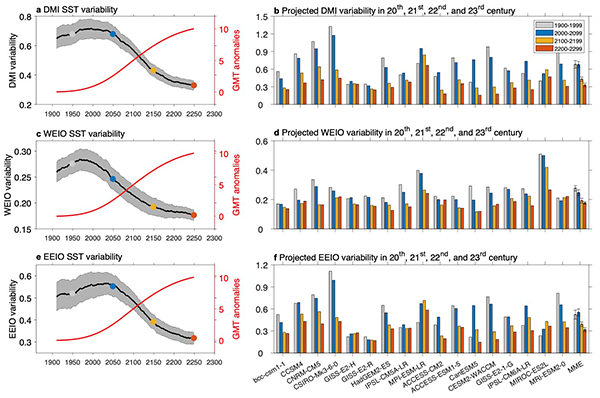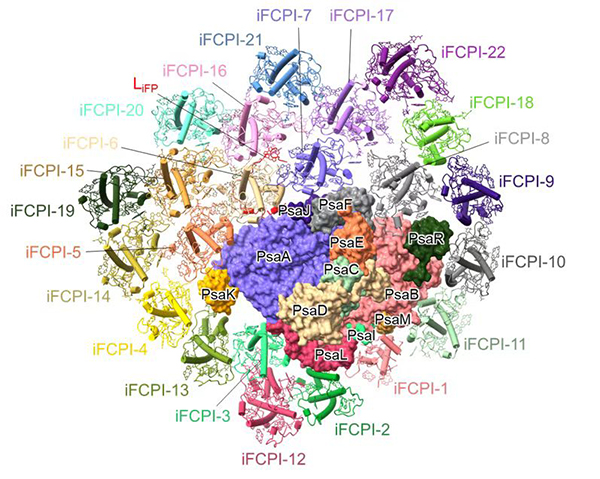On March 12, the selection results for the Top Ten Scientific Advances in Marine and Limnological Sciences of 2024 were announced. Two achievements from OUC made it to the list, which marked that OUC’s research has been selected into this rank for ten consecutive years. This achievement highlights OUC’s significant academic standing and influence in the field of marine and limnological research in China.
The selected projects from OUC are: “Variability of the Indian Ocean Dipole under Global Warming and Its Impact on Global Climate”, with Associate Professor Zhang Li, a member of Academician Wu Lixin's research team from Frontiers Science Center for Deep Ocean Circulation and Earth System, as the first contributor, and “Mechanisms, Evolution, and Structural Basis of Marine Organism Photosynthesis”, with Professor Zhang Yuzhong from the College of Marine Life Sciences and the Key Laboratory of Marine Biodiversity and Evolution as the first contributor.
The research team led by Academician Wu Lixin has systematically elucidated the spatiotemporal variations of the Indian Ocean Dipole (IOD) under global warming, and assessed the simulation deviations of climate models. The research also explored the relationship between the IOD and the El Niño-Southern Oscillation (ENSO) as well as the Asian summer monsoon, and evaluated their impacts on global climate. Under a high emission scenario, the long-term response of the IOD to global warming is nonlinear. During the 21st century, the variability of the IOD's eastern pole increases while that of the western pole decreases; however, both poles show reduced variability after the 21st century (Figure 1). The study further revealed the dominant influence of IOD's western pole on Antarctic spring sea ice and Australian spring bushfire weather. It also noted that these impacts are likely to diminish as global warming intensifies. These findings are crucial for comprehensively understanding future changes in IOD diversity and their implications for global climate. The research outcomes have been published in leading international journals including Nature Review Earth & Environment and Nature Communications.
Professor Zhang Yuzhong and his research team have made significant progress in the study of algal photosynthesis. They have analyzed the structure of Photosystem II in cryptophyte algae and its mechanism of light energy absorption and transfer, and revealed the origin and evolutionary mechanism of light-harvesting complex II in the red algal lineage. The team has also resolved the structure, energy transfer, and evolutionary mechanisms of Photosystem I in euglenophyte algae (Figure 2), and uncovered the structural basis of Photosystem I in symbiotic dinoflagellates for adapting to symbiosis. Furthermore, they have analyzed the structure of the photosynthetic RC-LH1 complex in purple photosynthetic bacteria, revealing the strategies and mechanisms for balancing light energy capture and quinone transfer in different purple bacteria. They also assembled carboxysomes as photosynthetic organelle-like structures that concentrate and fix CO₂ in vitro, unveiling the assembly mechanism of carboxysomes. These research findings have been published in top-tier journals, including Proceedings of the National Academy of Sciences, Nature Communications, and Science Advances.

